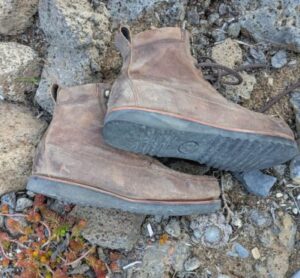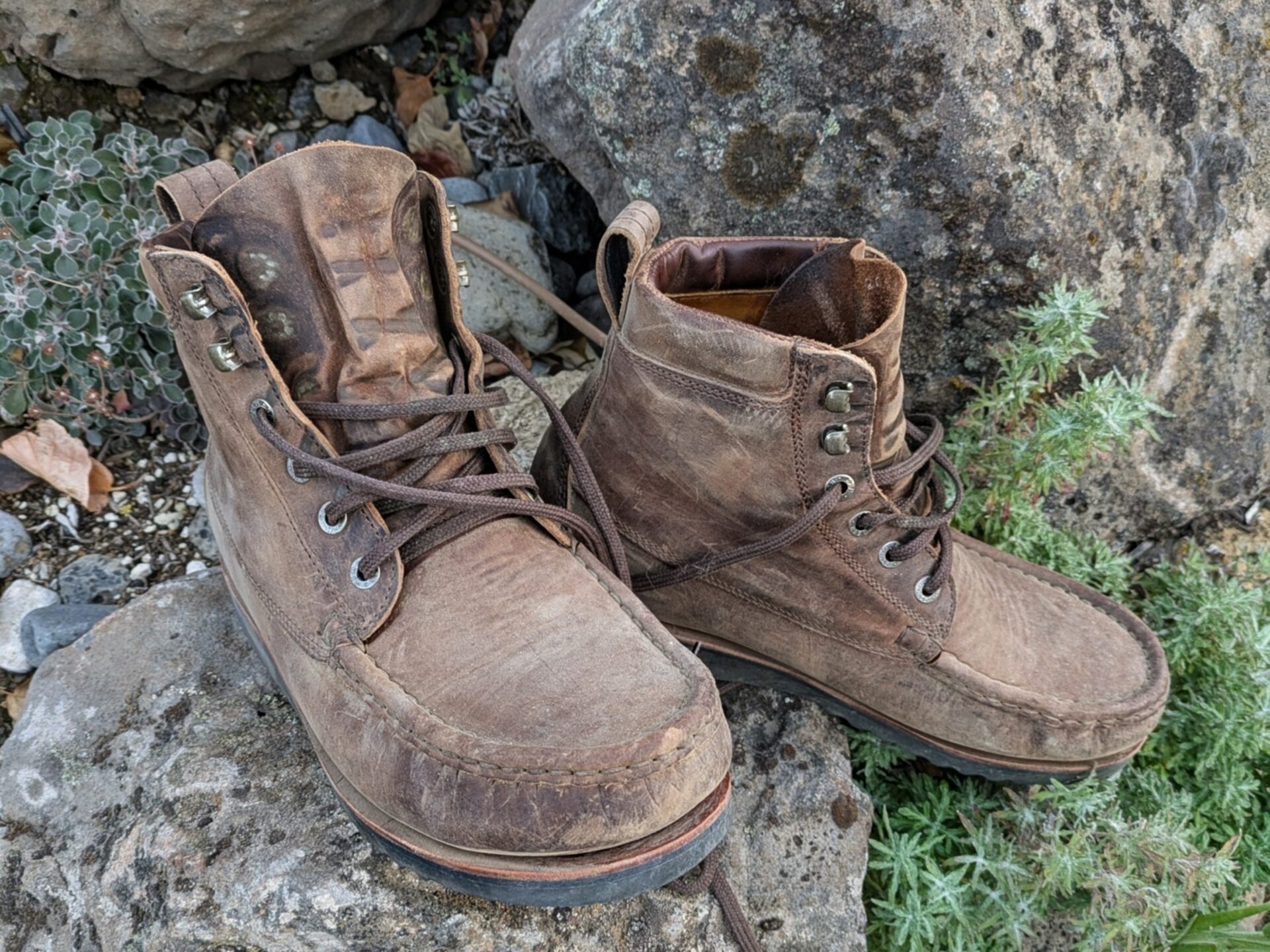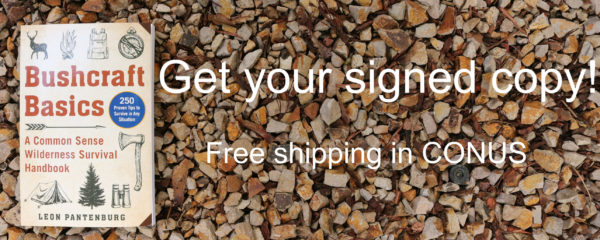The Jim Green moc toe boots are excellent footwear choices for hard-working people.
by Leon Pantenburg
Disclaimer: Jim Green supplied the product for this review. I was not paid to write it, and nobody had any input into the contents. All we ever promise is a fair and biased field test and report.
Moccasin toe leather boots are very familiar to me. I grew up on an Iowa farm, and the farmers all wore sturdy leather boots every day. My work boots were standard footwear any time I wasn’t in school. In college, I wore moccasin-toe Wolverines at my part-time job at the Ames, Iowa Hy-Vee grocery store.
A great advantage of moc toe boots is versatility. They can be paired with different styles of clothing, from rugged workwear to casual everyday outfits. They can even look good with semi-formal attire. The classic design makes them suitable for a wide range of looks, and that means they will get worn alot.

These Jim Green moc toes are sturdy work boots.
Because the moc toe boots worked so well, I never gave my footwear much thought and took their comfort , safety and utility for granted. So I was open to reviewing the latest Jim Green moc toe leather boots.
The Jim Green brand was already familiar. The footwear are made in South Africa, and I had already tried and reviewed the African Ranger boots and the Jim Green barefoot boots.
Here are the Moc Toe specs, according to the website:
- Midsole: Leather midsole with a resin runner.
- Construction: A 360° Blake stitch secures the upper to the midsole, which is designed to be resoled.
- Tongue: Soft, leather, and gusseted for comfort and to reduce weight.
- Hardware: Heavy-duty hooks and eyelets for secure lacing.
- Heel: Features heel stiffeners for support.
- Last: The “MT” last has a 3E wide fit and a roomy toe box.
- Shank: There is no steel shank, providing added flexibility.
- Sole: Options include the “Africa Barefoot Sole” (softer rubber, genuine rubber) or the “TW” (Tyre Wedge) sole, both designed for durability and grip.
- Weight: Approximately three pounds per pair for a size 8.
So enough of the PR copy. Here is how the Moc Toes worked out in the field. I took the brand new boots out of the box, put them on over a pair of good wool socks and went for a two-mile dog walk in the Mississippi-hot summer. Initially, the boots were stiff and kinda like walking with a cast on each foot. But they loosened up quickly, and and there were no blisters or rubbing.
At my part-time job at a local sporting goods store, I am on my feet the whole shift. I wore the moc toes one Saturday, and they were fine until about six hours into the day before my feet started getting tired. To be fair, I have yet to find a shoe or boot that can last the whole eight hours – and I have a lot of excellent footwear. (Stay tuned for more testing and reviews on insoles!)

As a working journalist, my attire was determined by the assignment. These Wolverines served me well!
Full grain leather:
This material, according to Portland Leather, is the crème de la crème, the outer layer or top most layer of the hide which contains all of the natural characteristics from the life of the cow. Full grain hides are the most expensive for both producers and consumers. They are desirable because all of those tightly knit fibers that protect the cow against the environment are left intact during the tanning process, resulting in the strongest, most durable leather available.
IMO, full grain leather is the durability king and the best choice for hard-use boots. The downside is that the thicker material is stiffer and requires a longer break-in time.
Break-in time:
Full grain leather boots require a lengthy break-in period. That is a given. But once they are broken-in, they will become comfortable and remain that way. Generally speaking, the stouter and more sturdy the boot, the longer it will take to break in. Quick tips for breaking in boots.
When I worked in a grocery store, my job entailed walking all day. At work, I’d start wearing the new boots, and would switch them out before my feet got sore. It didn’t take long for the new boots to become comfortable.
Sole
The sole pattern options include the “Africa Barefoot Sole” (softer rubber, genuine rubber) or the “TW” (Tyre Wedge) sole, both designed for durability and grip.
Make sure you match the sole pattern to the intended use. The African Barefoot pattern is great, because it doesn’t track a lot of mud and muck from the outside indoors. For most jobs, an extreme pattern sole is overkill and not effective.
These boots are probably not the best choice for hikers, though they certainly would work. You might decide these boots are the best choice for some hikes. On many established trails, the extreme sole patterns are not necessary, and may cause excessive wear.

These sole patterns are appropriate for a variety of construction, farm, ranching and carpentry jobs.
Blake Stich welt:
The Moc Toes have a 360° Blake stitch welt, which is very similar to the tried-and true Goodyear welt. This means the boots can easily be resoled when needed. On a full-grain leather boot, the soles will wear out long before the uppers do.
No steel shank:
A steel shank is wonderful if you’re working on ladders or roofs, and construction workers may need them in their boots. But for most of us, the shank adds weight, is not necessary and cuts back on boot flexibility.
Weight
Quality materials and workmanship don’t come without a price, both in cost and weight. The moc toes weigh in at about three pounds for a size 8. These are not overly heavy, but they are certainly not lightweights.
There are many factors that determine how comfortable your hiking footwear will be. Consider these things when you are shopping:
- Shoes or boots for hiking?
- Waterproof or not?
- What are the best socks for the conditions?
- How do you avoid getting sore feet?
- Will the shoes or boots keep your feet warm?
Please click here to check out and subscribe to the SurvivalCommonSense.com YouTube channel – thanks!




Leave a Reply